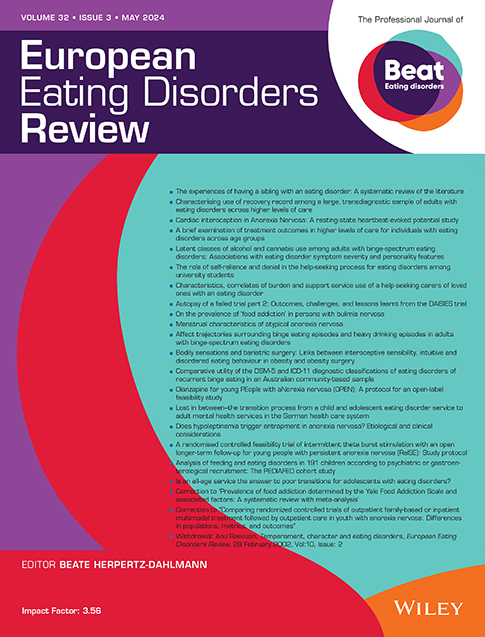Affect and disordered eating behaviours in women's daily lives: The comparative explanatory roles of distinct momentary emotion dysregulation dimensions
Abstract
Objective
The present study aimed to examine: (a) whether distinct momentary emotion dysregulation dimensions differentially mediated momentary associations between affect and disordered eating behaviours (DEBs) in the natural environment; (b) whether these associations differed based on affect, emotion dysregulation, and DEB type.
Method
150 women with eating disorder pathology (Mage = 20.95, SD = 4.14) completed 4 surveys targeting affect, emotion dysregulation, and DEBs each day for a 10-day ecological momentary assessment period. Multilevel structural equation models examined whether four momentary emotion dysregulation dimensions (difficulties with emotional and behavioural modulation, lack of emotional acceptance, awareness, and clarity) mediated momentary associations between negative and positive affect (PA), and loss of control eating, overeating, and dietary restriction.
Results
Momentary difficulties with emotional and behavioural modulation mediated momentary associations between negative affect (NA) and women's loss of control eating and overeating. These findings did not extend to PA, the other emotion dysregulation dimensions, or dietary restriction.
Conclusions
Collectively, these results support emotional and behavioural modulation deficits in the natural environment as potential transdiagnostic maintenance mechanisms of overeating and loss of control eating. These findings also support the potential benefits of targeting NA and this type of emotion dysregulation in existing and novel real-time eating disorders interventions.

 求助内容:
求助内容: 应助结果提醒方式:
应助结果提醒方式:


